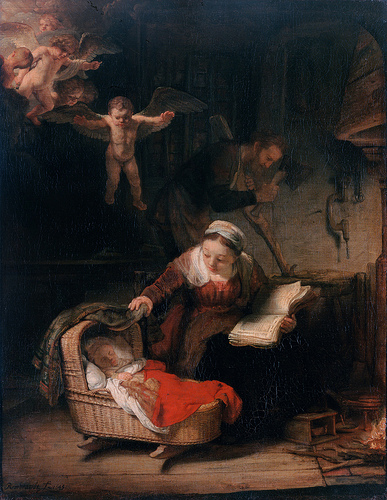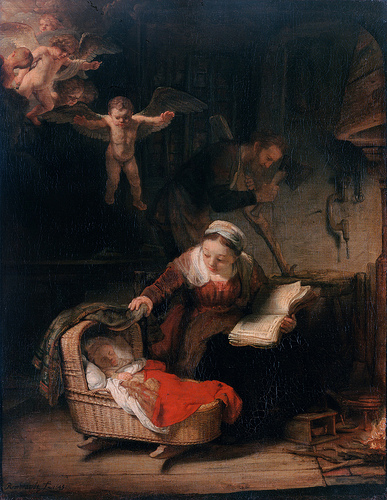 This short posting, which focusses on the symbolic content in a painting is written by Dr Caroline Farey of the Maryvale Institute. She and I work as a double team, teaching in July at the residential weekend of the one-year distance-learning course about Catholic art and culture called Art, Beauty and Inspiration in a Catholic Perspective. This is the first a series on the symbolic content on art by Caroline and Dr Lionel Gracey, also of the Maryvale Institute.
The Maryvale Institute is the only Pontifically recognised Higher Institute of Religious Sciences in the English speaking world and the course, in distance learning form with one residential weekend is offered through its base in Birmingham, England and in the US in Kansas City through the Maryvale Center at the Diocese of Kansas City, Kansas. For further information go here.
This short posting, which focusses on the symbolic content in a painting is written by Dr Caroline Farey of the Maryvale Institute. She and I work as a double team, teaching in July at the residential weekend of the one-year distance-learning course about Catholic art and culture called Art, Beauty and Inspiration in a Catholic Perspective. This is the first a series on the symbolic content on art by Caroline and Dr Lionel Gracey, also of the Maryvale Institute.
The Maryvale Institute is the only Pontifically recognised Higher Institute of Religious Sciences in the English speaking world and the course, in distance learning form with one residential weekend is offered through its base in Birmingham, England and in the US in Kansas City through the Maryvale Center at the Diocese of Kansas City, Kansas. For further information go here.
Caroline writes:
The Holy Family by Rembrandt
In this painting we ponder particularly on Our Lady, as Mother of God, Mother of the saviour of the world, Mother of her Son.We can discern a triple revelation here.
The first act of revelation is from the Old Testament Scriptures to Mary.The light picks out the eager attentionon Mary’s young face and on the Scriptures that she is reading. Mary has suddenly but quietly turned in her chair from the text she has been reading to the fulfilment of those words that she now contemplates as ‘made flesh’ in the basket cot beside her.The Scriptures are telling her who her Son is.
But both her face and the book have parts in shadow too. Similarly Christ’s face is part in shadow and part illuminated.The shadows remind us of the shadow of the suffering and death he will endure, as she will, suffering foretold also in the Jewish Scriptures – the Old Testament.
The second act of revelation is by Mary to the world.She holds back a richly embroidered veil: by this she reveals Christ to us the onlookers.Mary has a place in God’s revealing of his Son.
The third act of revelation is by the sleeping child himself. In his sleep, he holds back a bright red coverlet revealing a lining of lamb’s fleece. Christ reveals himself, even as an infant fast asleep.The red coverlet, as we have seen in paintings before, flows over the edge like blood poured out, and it is highlighted further in its brightness in its juxta-positioning against the richly deep red of Mary ‘s skirt. Mary and the child both wear red. By the fleece Jesus is revealing himself as the lamb of God who is to be led silently to the slaughter.
The revelation taking place at the centre of the painting, through an interplay of light and movements, cloths and colours, is reinforced by other details surrounding Mary and the crib.Firstly, of course in the top left hand corner are the angels bursting in on the scene revealing to us that this is no ordinary carpenter’s child.Where are they looking? One is looking lovingly at Mary, the other looking soberly at the baby.Diagonally opposite the angels in the bottom right hand corner is the fire which, together with the angels is the main source of diffused light across the bare boards of the floor and the barren wall behind, with what look like further parts of the yoke being made by Joseph.A contemplative scene, which, despite looking so humble and ordinary is nonetheless imbued throughout by the grace of the Incarnation of the Son of God through Mary, Theotokos, Mother of God.


